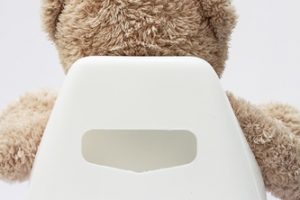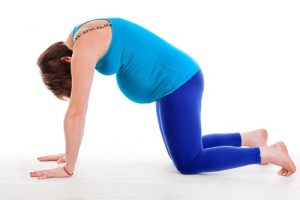Ahh teething… the great scapegoat for any out-of-sort infant behaviour!! That’s why we have asked our GP, Melissa Homewood, at what point should we take a teething baby to the doctor, and what teething remedies work, and which ones don’t?
 When to see a doctor
When to see a doctor
Teething gets blamed for everything from irritability, poor sleep, diarrhoea, drooling, runny nose and nappy rash. While teething undoubtedly causes unpleasant symptoms in some babies, we need to be wary of attributing everything to teething (particularly temperatures) without considering other underlying causes. I would certainly get a fever in a young baby reviewed, as teething should not cause significant temperature.
Off the shelf teething remedies for baby
As with anything in the world of baby a “problem” creates a huge market for selling exhausted and desperate parents (not to mention our babies) all kinds of remedies.
Nearly all of these remedies are unproven. However, as long as no harm is caused I have no problem with parents using whatever they feel helps to get them through. I often think that as parents when we feel we are “doing” something to fix a problem and we therefore have hope, our demeanor is more positive/relaxed and our babies can read this and naturally respond in a positive way. The “placebo effect” is quite strong and again, as long as what we are using is doing no harm, it can be a useful tool.
Here is a closer look at some popular options;
1. Natural medicines and homeopathic preparations
One of the big areas that parents need to be informed about are “natural medicines” and homeopathic preparations. One big fallacy out there is that natural = safe. However, remember arsenic is natural, cyanide is natural, belladonna is natural. Furthermore, these preparations are not subject to scrutiny by the Therapeutic Goods Association, usually have little or poor quality evidence/studies behind them and the composition can be variable. In summary: you don’t necessarily know what you are getting and you can’t assume it is safe.
Not all that long ago Hyland’s teething tablets were in the news, reported as being responsible for deaths of 10 infants in the USA. This product is still available in Australia. Marketed as a homeopathic teething tablet, it contains belladonna (albeit extremely low dilutions). It was found by the US FDA to have inconsistent amounts in its tablets, some far exceeding the dose claimed to be present. (https://ajp.com.au/news/tga-not-good-enough-homeopathic-teething-products/). Belladonna (“deadly nightshade”) is certainly natural – it derives from a plant, Atropa belladonna. This plant is also one of the most toxic plants in the world, causing symptoms such as dilated pupils, light sensitivity, blurred vision, rapid heart race, headache, flushing, dry mouth, slurred speech, hallucinations, confusion/delirium, constipation, urinary retention, seizures and death. Whether or not this is truly an issue in the batches available in Australia, I don’t know BUT the point that needs to be made is that we cannot just assume these products are safe alternatives because they are available over the counter or marketed as natural/homeopathic.
2. Teething gels
The benefit of teething gels is also unclear. Perhaps one of the greatest benefits is simply the massaging the gel into the gums which itself can help symptoms. Some gels (e.g. bonjela) contain “salicylate” which is like aspirin (aspirin is NOT safe for children under 12). These are not suitable for children under four months and should be used only in small amounts, absolutely not exceeding the amount/frequency of administration recommended on the packaging. Even then, if you are attributing months of irritability to teething and frequently using the product, there is a risk of toxicity and cases have been reported. Other gels (e.g. sm-33) contain local anaesthetics, which in large doses can be toxic as well –never exceed the dosage instructions.
3. Amber necklaces
I know this point will be controversial because plenty of people swear by them BUT one thing I would not recommend is the use of amber necklaces. The obvious concern is both a choking and strangulation risk. The ACCC issued a warning about their use for these reasons. The recommendation for parents, if they chose to use them, included; always supervising their infant when wearing the necklace, not letting them bite/chew, and removing it for sleep. There are various mechanisms by which they are reported to work (again, probably strong placebo effect) but the most plausible is the theory that they contain something called succinic acid, which is thought to be a pain relieving substance. When the amber heats up this is supposed to be absorbed through the skin.
There is however no evidence that;
- Succinic acid has analgesic (pain relieving) effects at any dose. Presumably the dose released from beads contacting a very small area of skin would be miniscule so would be unlikely to exert any significant effect.
- Succinic acid melts at body temperature. (Amber would need to be heated to over 200 degrees for it to be released. Body temperature is around 37degrees.)
- Succinic acid is absorbed via the transdermal (skin) route.
Finally, even if it was released into the bloodstream, do we then really want an unregulated, unknown amount of substance entering our child’s body for prolonged periods of time? Just food for thought. Remember also that despite anecdotal evidence that these necklaces work, the natural history of teething is that it will get better with time so rather than the necklace fixing all, odds are that time was the great healer.
Simple and safe – your GP’s recommendation
So, what can be done to ease the discomfort of teething? First – perhaps consider whether or not there are other causes for your baby’s symptoms (e.g. over-tired/stimulated, bored, viral illnesses, nappy rash, hunger or general temperament. As noted previously, I would certainly get a fever in a young baby reviewed, as teething should not cause significant temperature. If it appears teething is to blame, simple and safe measures include:
- Massaging the gums with a clean finger/face washer
- Something cool to bite on – e.g. cool facewasher, cool teething ring, rusks
- Offer soft foods
- Cuddles! This stage will only last a short period of time – at least that’s what I tell myself and one day I will miss how much they need my comfort!
- If I were going to use anything “medical” I would use paracetamol. It is safe for babies as long as you do not exceed the maximum recommended dosein 24 hours as per the instructions on the bottle.
Here are some articles for more information
- http://sciencebasedmedicine.org/amber-waves-of-woo/
- http://www.dailytelegraph.com.au/news/nsw/amber-teething-necklace-warning-after-toddler-nearly-strangled/news-story/92f5e9585cea634d417598745049ae96
- https://www.doctorportal.com.au/mjainsight/2011/4/poison-risk-teething-gels/
- https://www.nps.org.au/australian-prescriber/articles/over-the-counter-medication-in-children-friend-or-foe

 When to see a doctor
When to see a doctor











